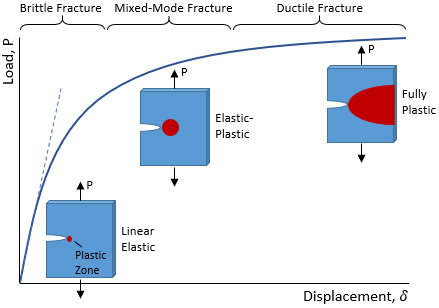To evaluate the effect of the specimen design on the flexural strength σ f and failure mode of ceramic structures testing the hypothesis that the ceramic material under tension controls the mechanical performance of the structure.
Ceramic failure mode compression.
Another way at looking at resistance to failure for ceramic materials is to examine the energy required to drive cracks through the system.
The failure mode for 4 out of the 7 was a small ceramic capacitor failure.
A ceramic material is an inorganic non metallic often crystalline oxide nitride or carbide material.
Implant specific and patient specific causes of ceramic failure have not been fully evaluated.
A typic blsf ceramics.
These two case studies are intended as an introduction for the clinical researcher in using qualitative descriptive.
Two fatigue conditions involving tension tension and tension compression cycling were employed.
Generally a ceramic with more defects is weaker.
Some elements such as carbon or silicon may be considered ceramics ceramic materials are brittle hard strong in compression and weak in shearing and tension.
And the failure modes were analyzed using an optical.
The failure mode and mechanical properties of the sic ceramic specimen with different crack densitie an sic ceramic s are analysed under uniaxial compression.
The strain range.
Compression breakdown voltage under compression pulse discharge under compression isolated mechanical bending.
An experimental technique based on the kolsky pressure bar has been developed to investigate the behavior of ceramics under dynamic multiaxial compression.
They withstand chemical erosion that occurs in other materials subjected to acidic or caustic environments.
It should be applied before attempting to remove any failed part remaining in situ as the fracture surface may be damaged during this procedure.
Bismuth titanate bi 4 ti 3 o 12 whose failure mode ferroelastic behavior and toughening effect under uniaxial compression load were comprehensively assessed firstly a series of crystallographic parameters including lattice constants a b c and v orthorhombicity g and single crystal distortion s 0 lattice were calculated from xrd patterns.
Compression by supporting the incisal.
The fatigue behavior along with damage mechanisms and failure modes of a fiber reinforced ceramic matrix composite with a cross ply lay up was investigated under strain controlled mode.
Moreover the effective young s modulus obtained using the dem is compared with the theoretical curve obtained using the mori tanaka method.
Experimental results for aluminum nitride aln together with data available in the literature indicate that a mohr coulomb criterion and the johnson holmquist model fit the experimental data for failure in a brittle manner whereas the.
We discussed this earlier.



























